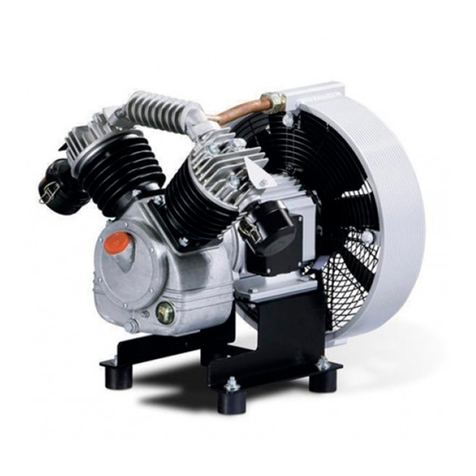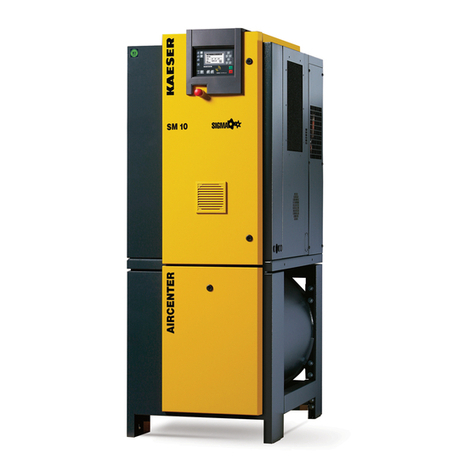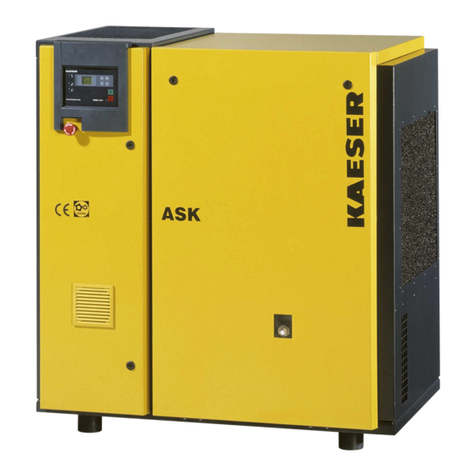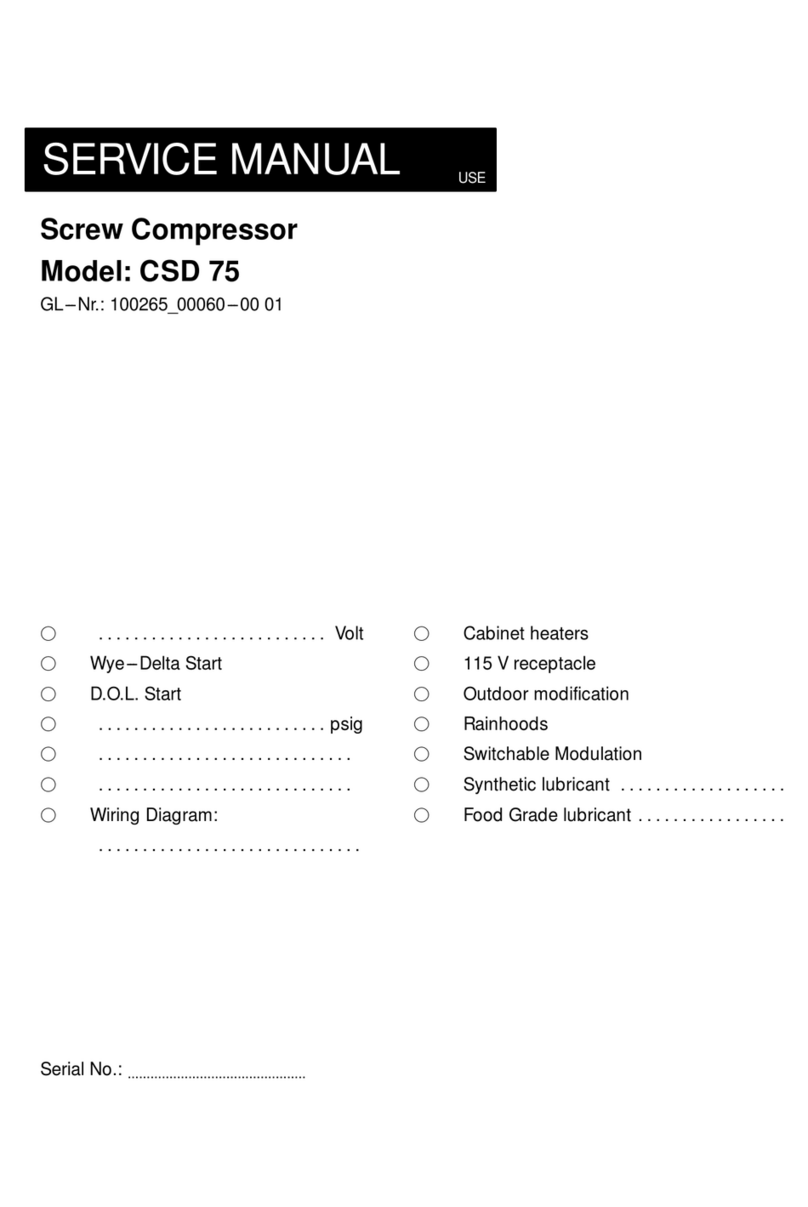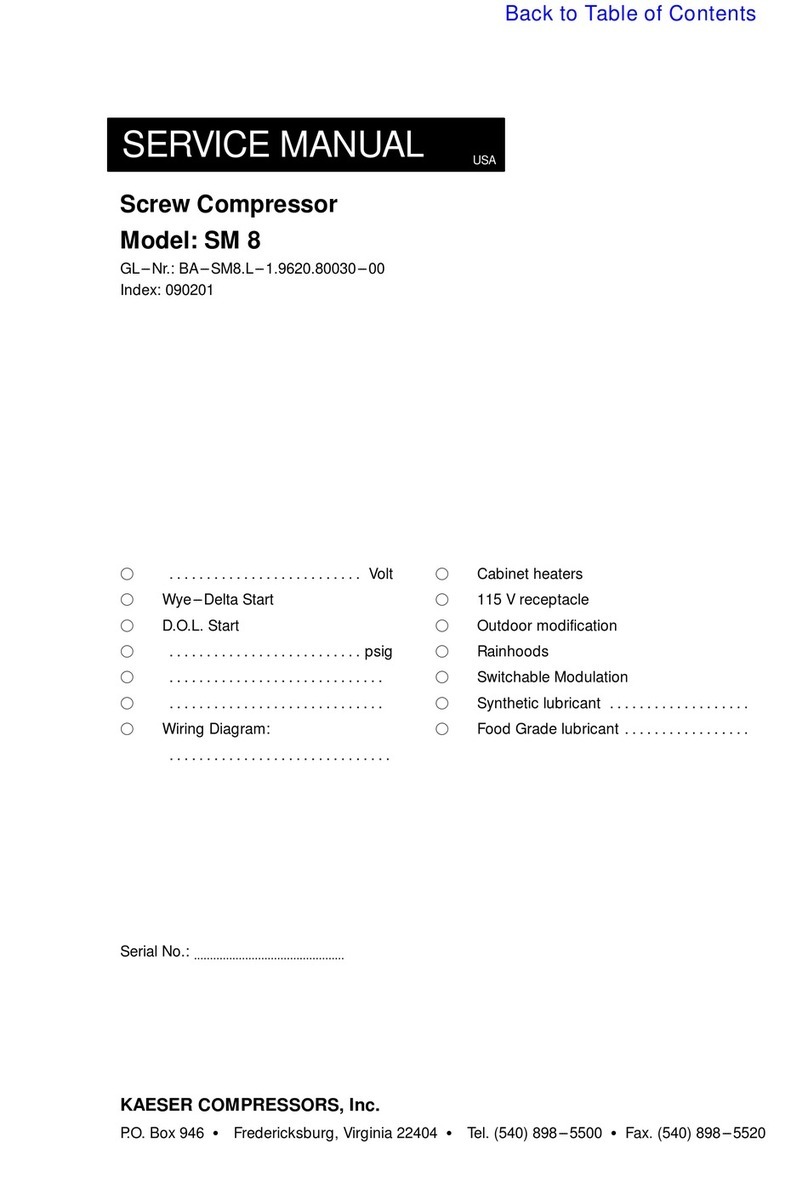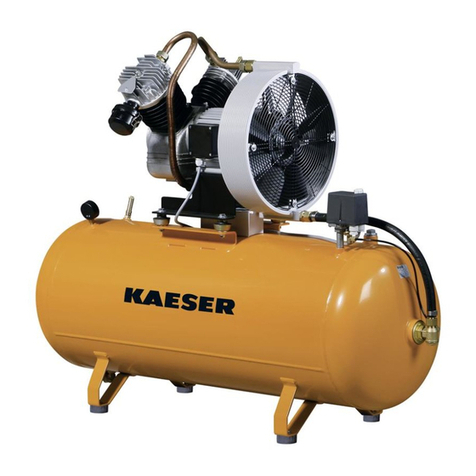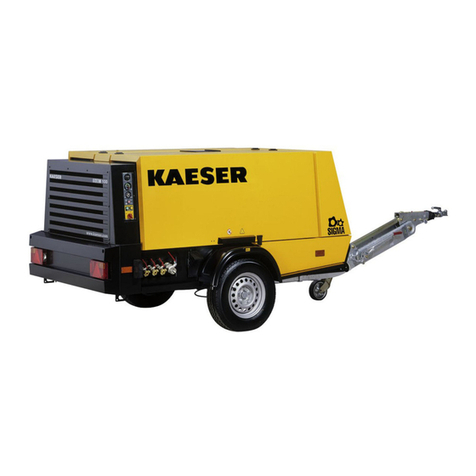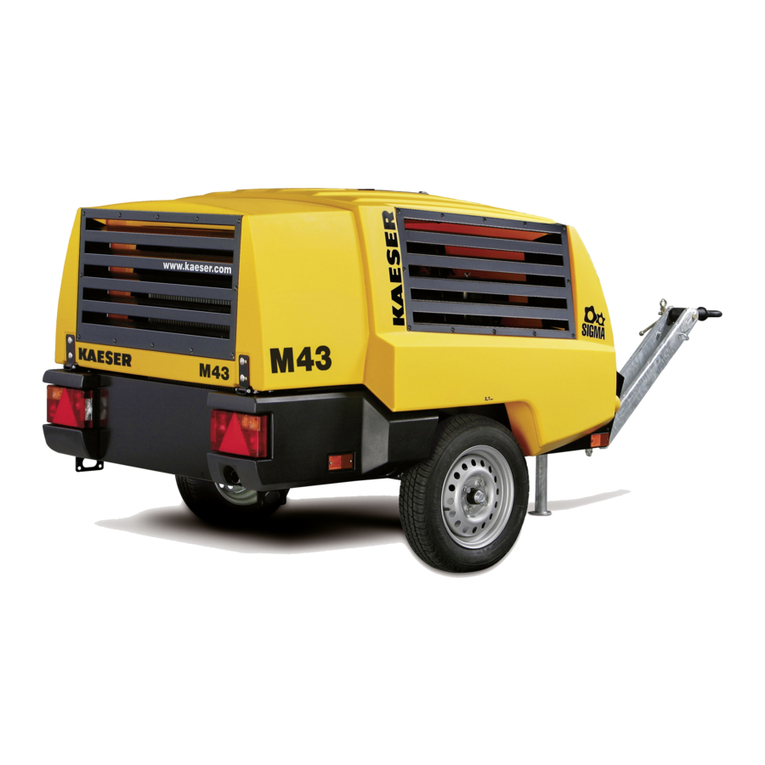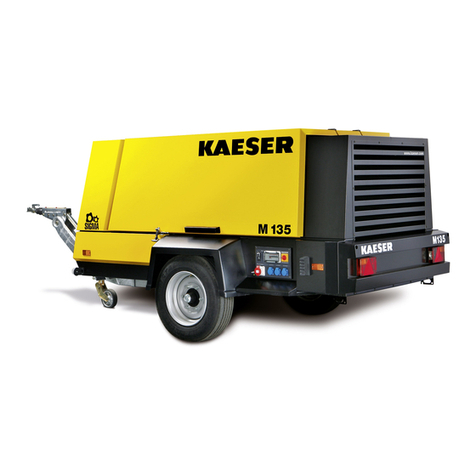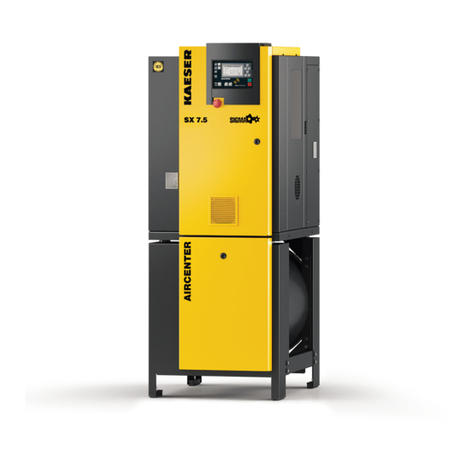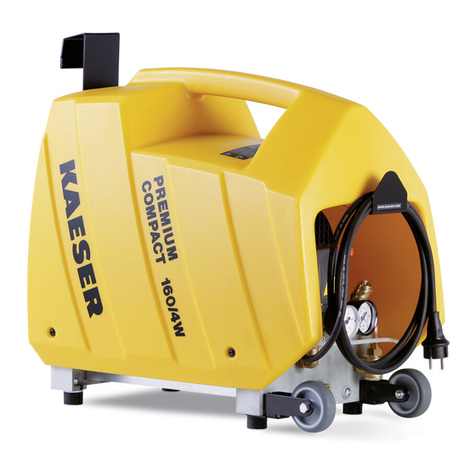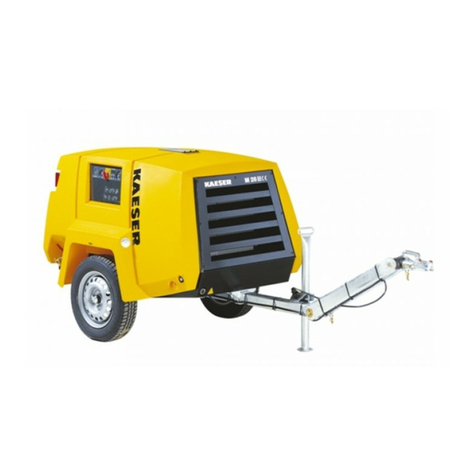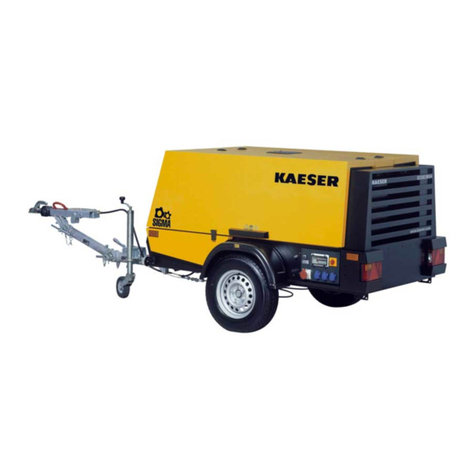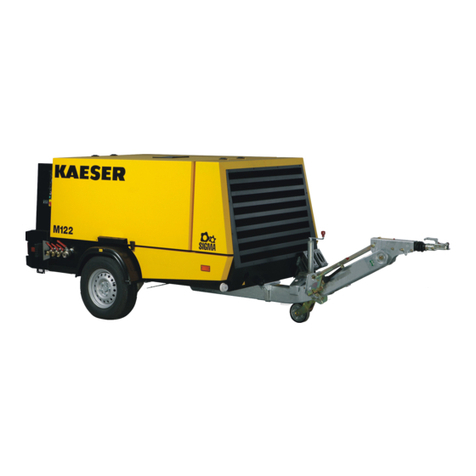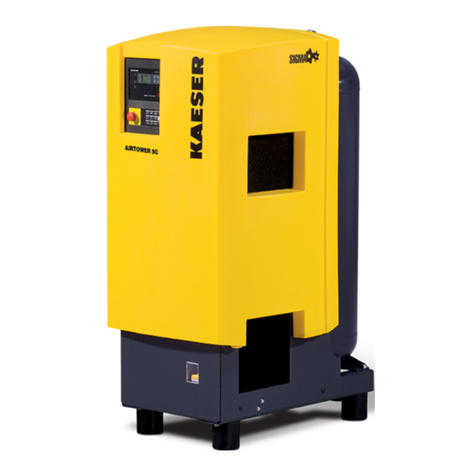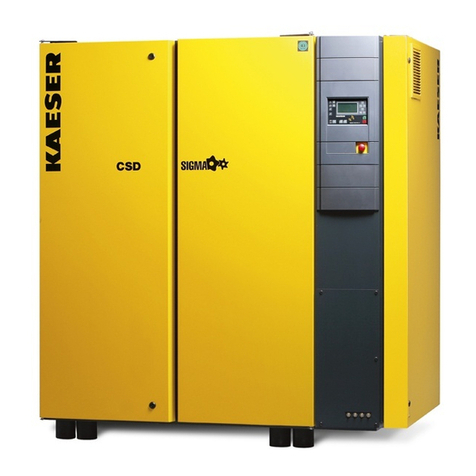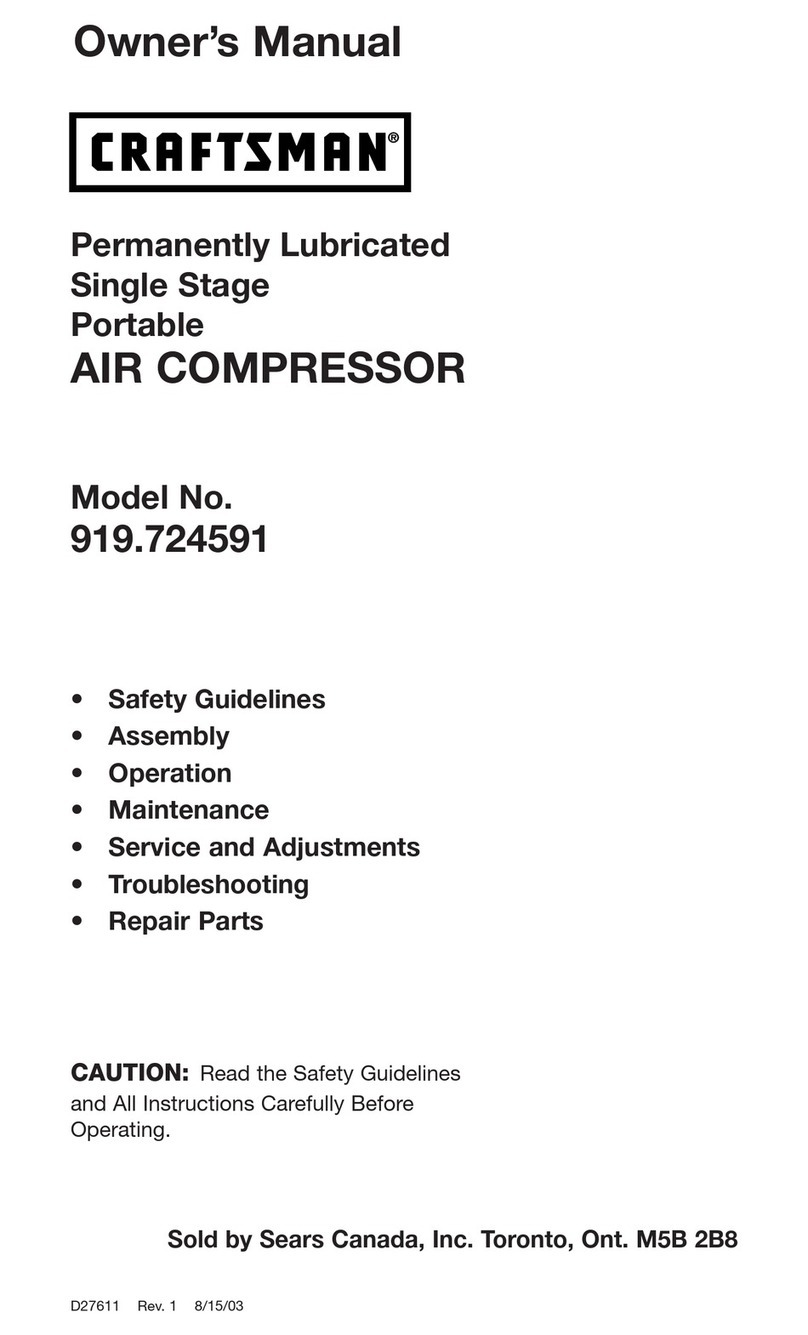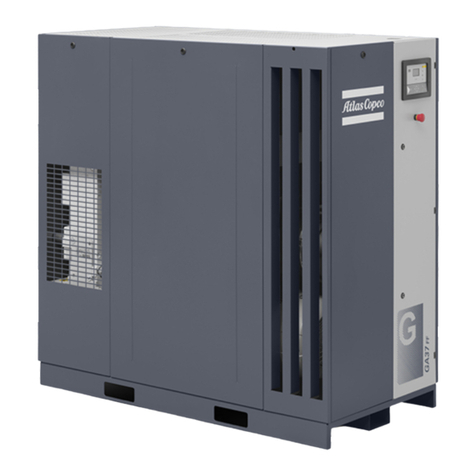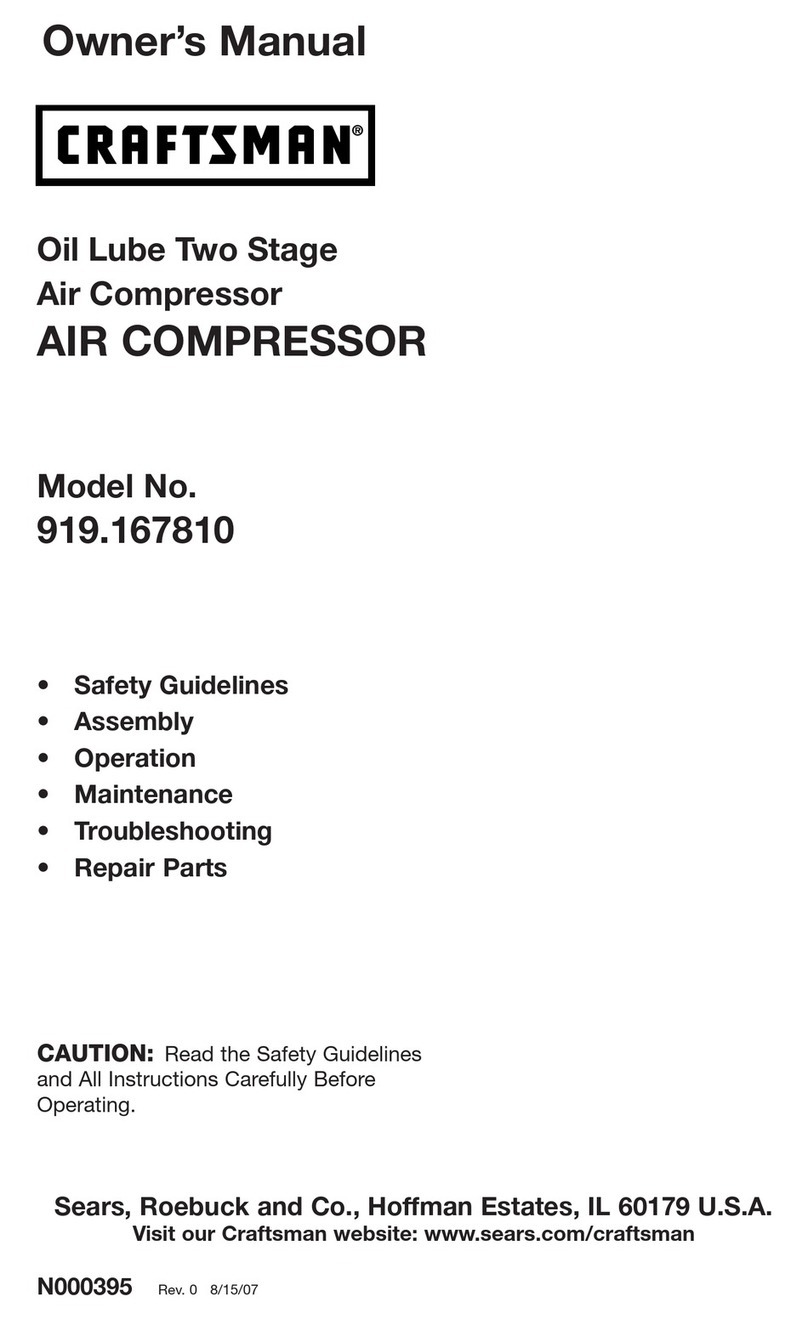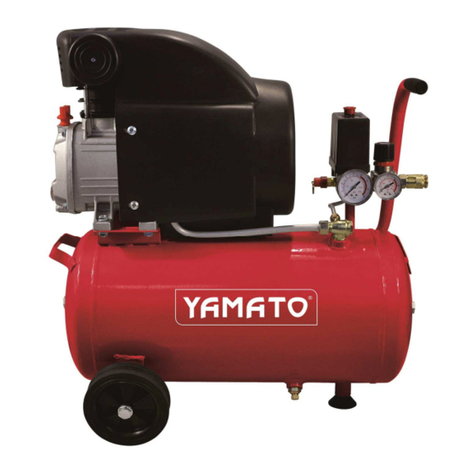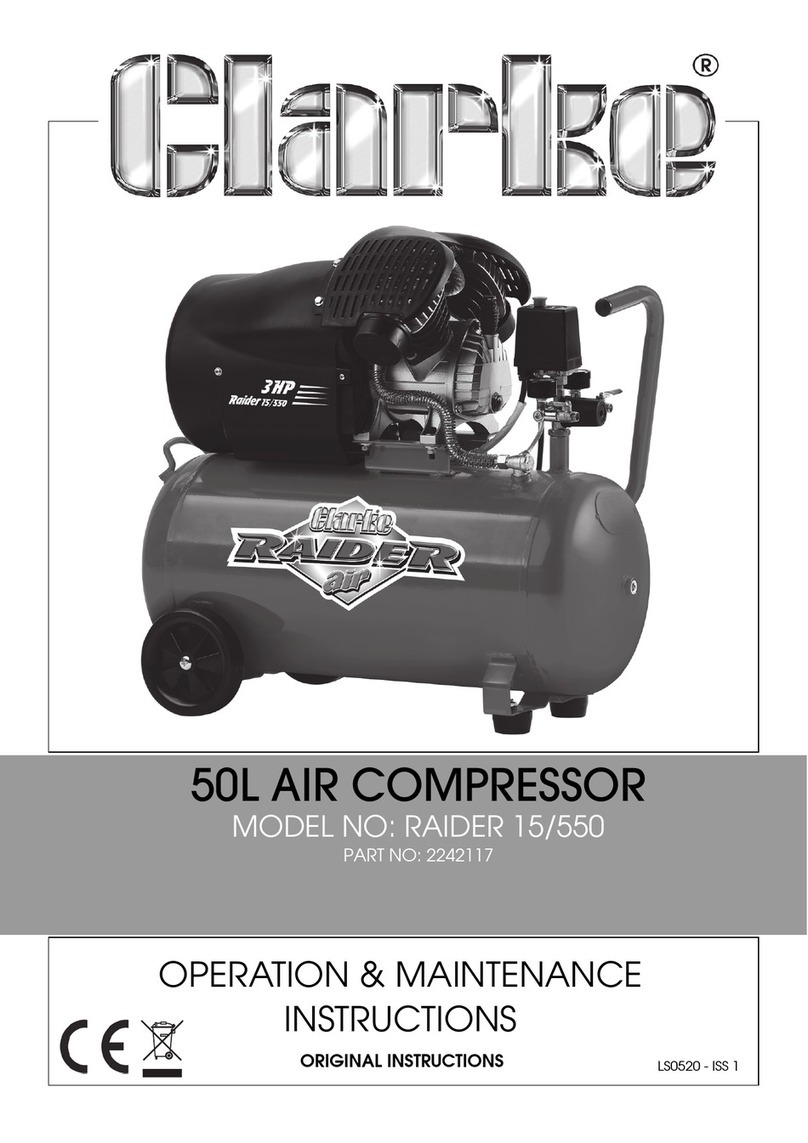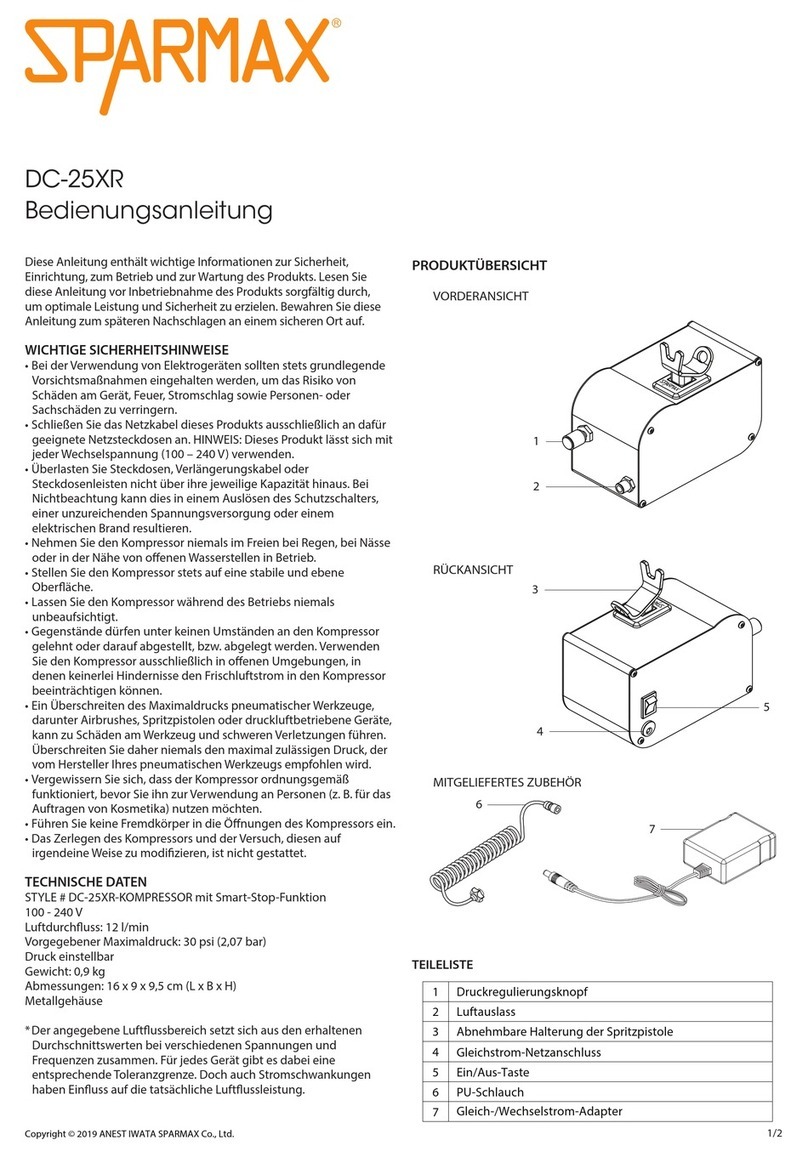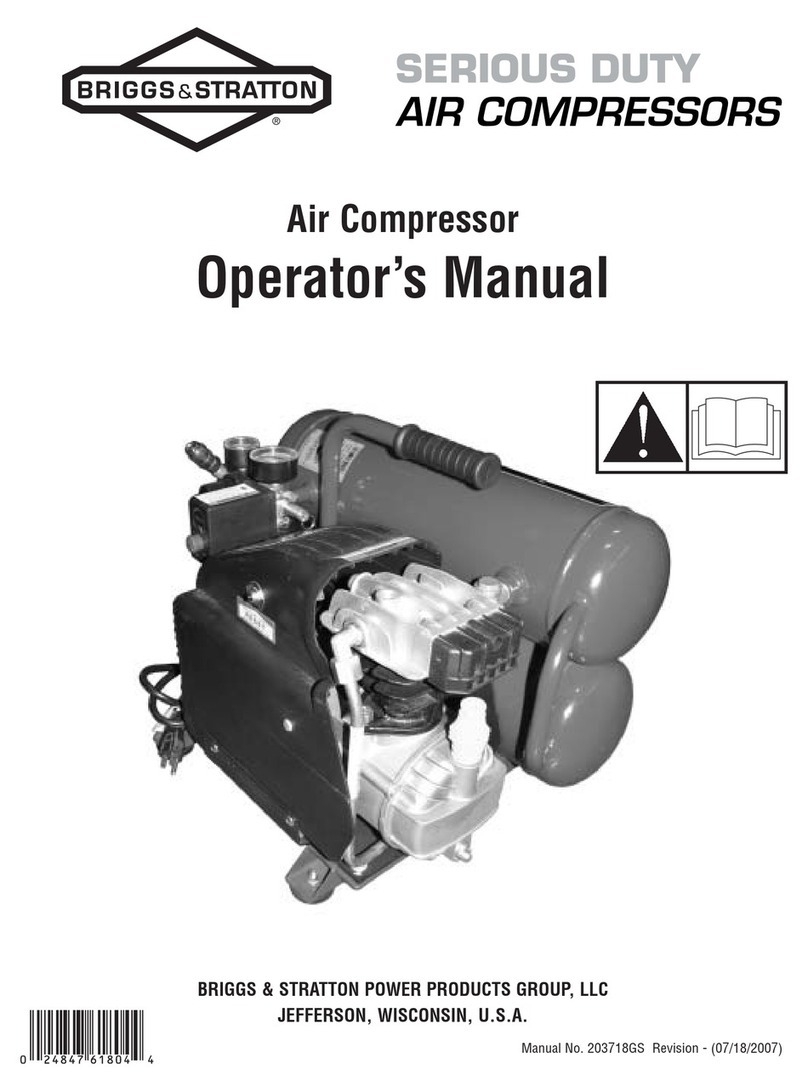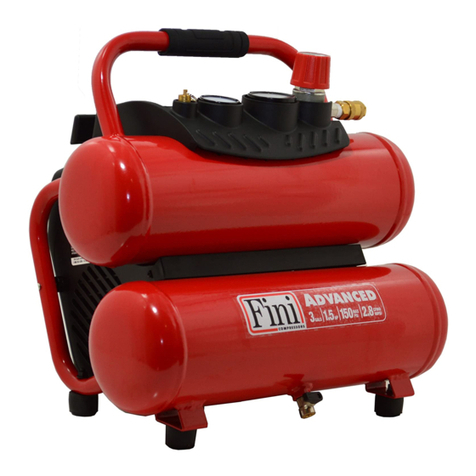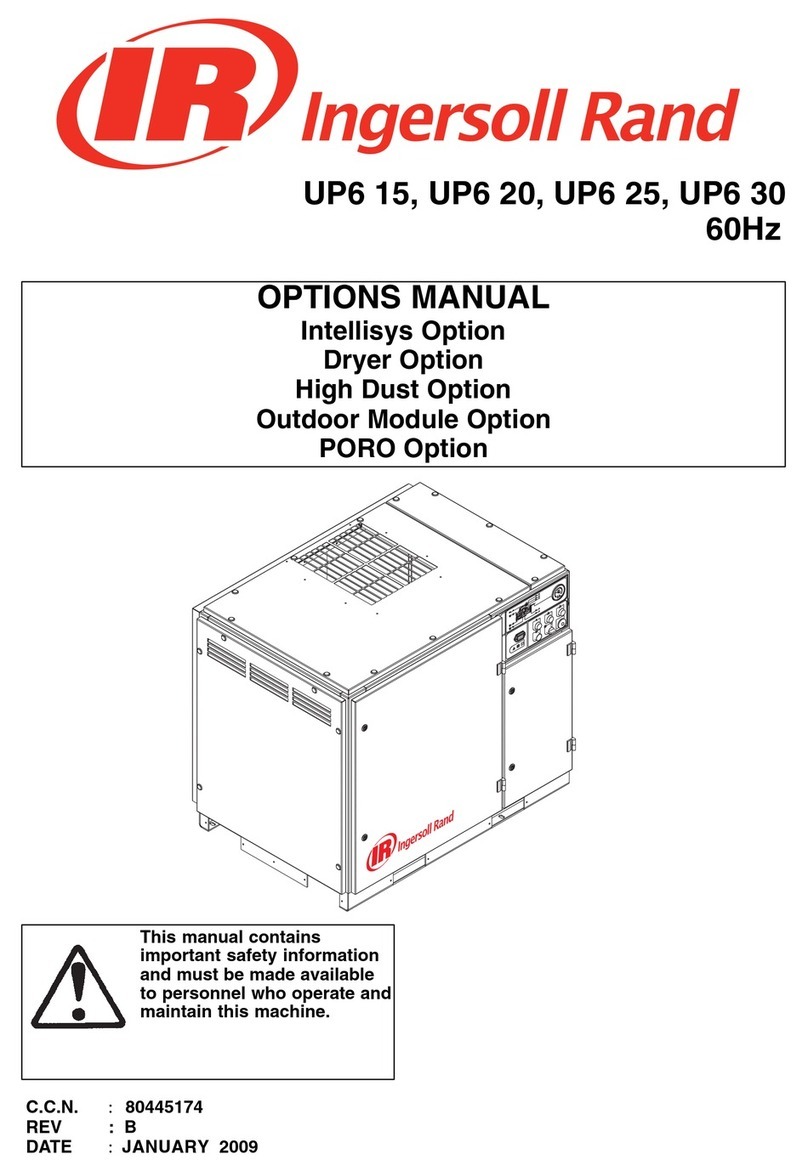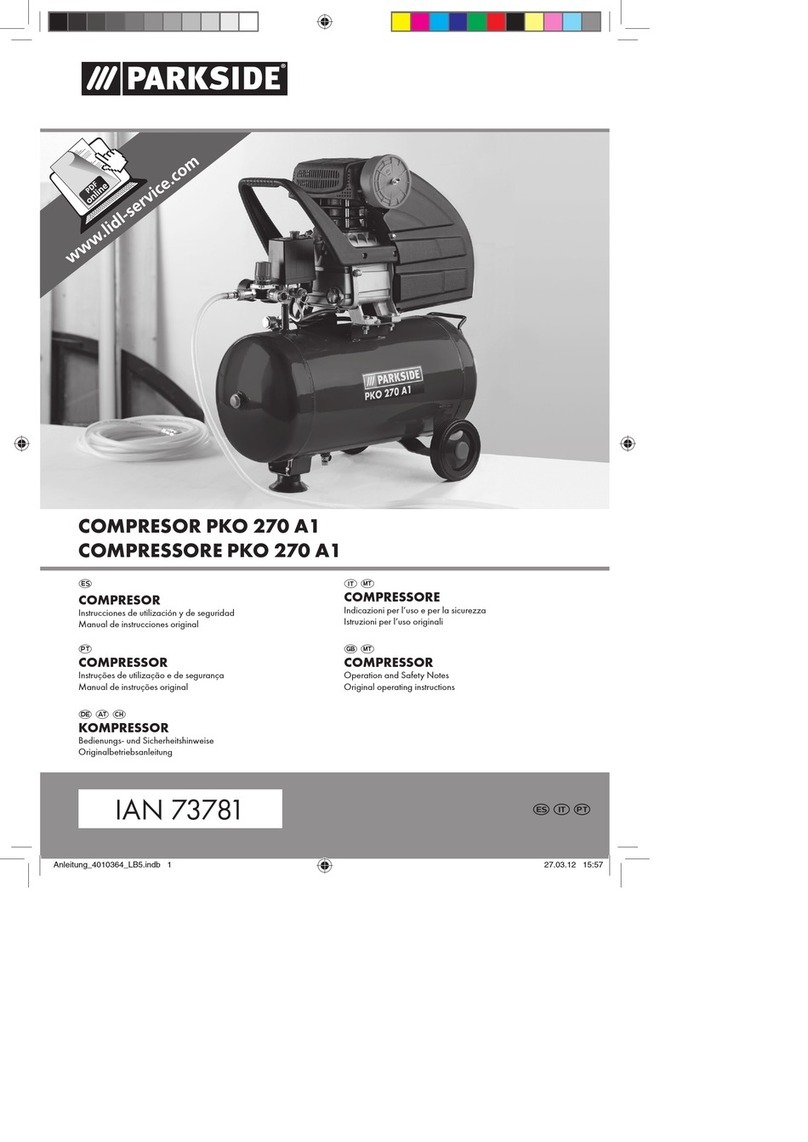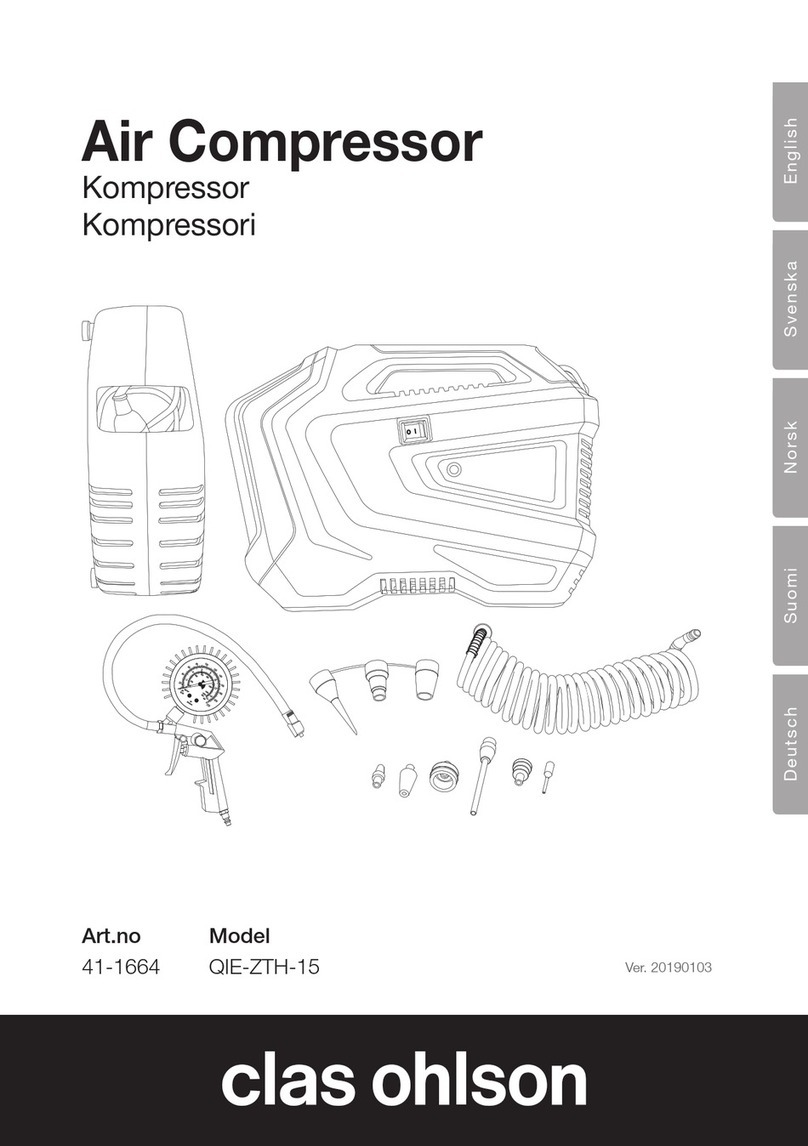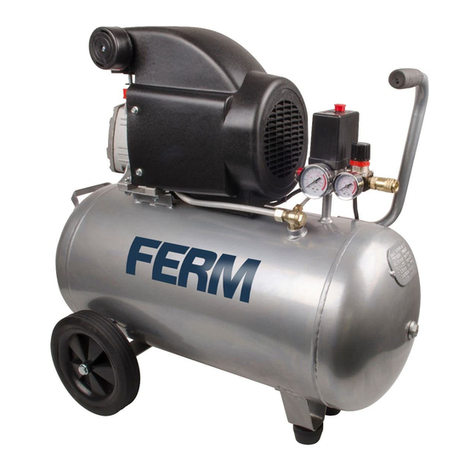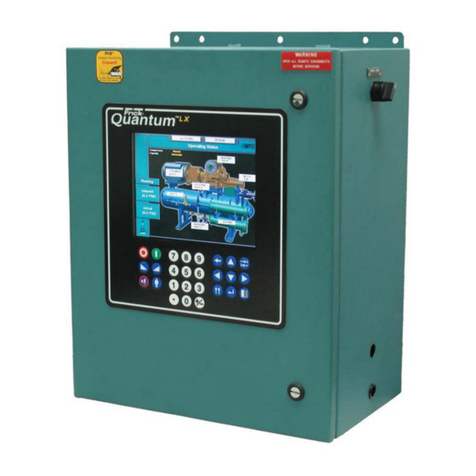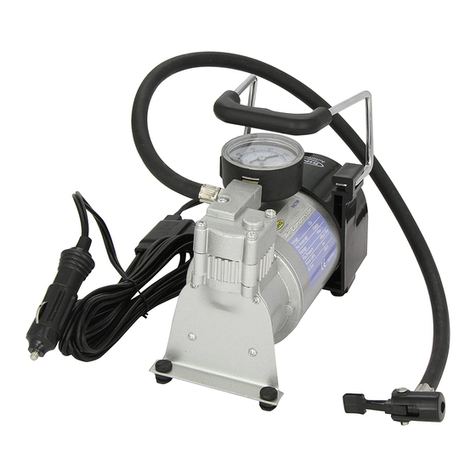
Table of Contents
Ch ap t er --- Pag e
ii
7 Putting into Operation 7 --- 22..........................................
7.1 Points to be Observed before Putting into Operation 7 --- 22......................
7.2 Points to be Observed before Starting the Compressor Unit 7 --- 22...............
7.3 Checklist 7 --- 24............................................................
7.4 Direction of Rotation Check 7 --- 25............................................
7.5 Motor Overload Relay Adjustment and Changing 7 --- 26.........................
7.6 Setting the Air System Pressure 7 --- 27........................................
7.7 Functional Check of the Door Interlock Switch 7 --- 28...........................
7.8 Measures to be taken before Initial Start 7 --- 30.................................
7.8.1 Pour a small quantity of oil into the air inlet port 7 --- 30..........................
7.8.2 Running the compressor in idle 7 --- 30........................................
8 Operation 8 --- 31.....................................................
8.1 Control Panel 8 --- 31........................................................
8.2 SIGMA controller 8 --- 31.....................................................
8.2.1 Emergency Stop Pushbutton 8 --- 31..........................................
8.2.2 Function keys 8 --- 32........................................................
8.2.3 Light emitting diodes and plain text display 8 --- 32..............................
8.3 Starting and Stopping the Compressor Unit 8 --- 33..............................
8.4 Acknowledgement of Alarms 8 --- 33...........................................
8.5 Acknowledgement of Service Messages 8 --- 34.................................
8.6 Faults: Possible cause --- Remedy 8 --- 35......................................
8.6.1 Working temperature too high 8 --- 35..........................................
8.6.2 Motor overload protection relay trips 8 --- 35....................................
8.6.3 Compressor runs but does not reach pressure. 8 --- 36..........................
8.6.4 Oil leaks out of air filter 8 --- 36................................................
8.6.5 Full---load/Idle sequence occurs too frequently (short cycles) 8 --- 37..............
8.6.6 Safety relief valve blows off 8 --- 37............................................
8.6.7 Oil in the package 8 --- 37....................................................
8.6.8 Excessive oil consumption 8 --- 37.............................................
9 Maintenance 9 --- 39..................................................
9.1 Observe the following rules during all maintenance and servicing work: 9 --- 39.....
9.2 Regular Maintenance 9 --- 40.................................................
9.3 Opening and Closing the Compressor Package 9 --- 41..........................
9.4 Checking the Drive Belt Tension 9 --- 42........................................
9.5 Drive Belt Change 9 --- 42....................................................
9.6 Cleaning or Replacing the Filter Mat 9 --- 43....................................
9.7 Cleaning or Replacing the Air Filter 9 --- 44.....................................
9.8 Servicing the Electric Motor 9 --- 44............................................
9.9 Testing the Safety Relief Valve on the Oil Separator Tank 9 --- 45..................
9.10 Venting the compressor unit 9 --- 45...........................................
9.11 Oil Filter Change 9 --- 46.....................................................
9.11.1 Removal and replacement of the oil filter cartridge 9 --- 46........................
9.12 Oil Top --- Off 9 --- 47..........................................................
9.13 Cleaning the Oil Cooler and Aftercooler 9 --- 49.................................
